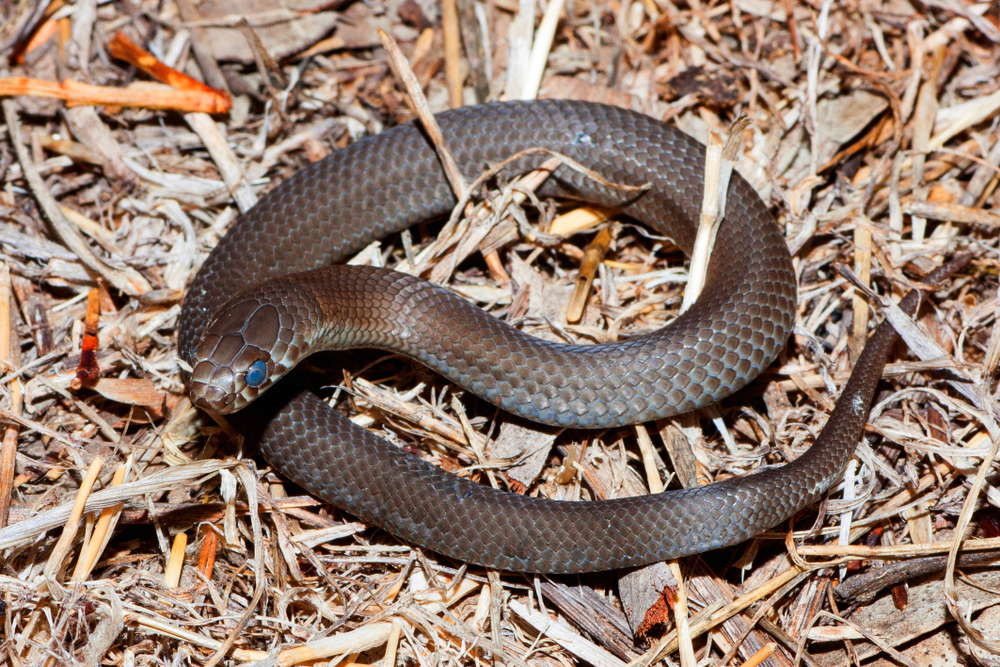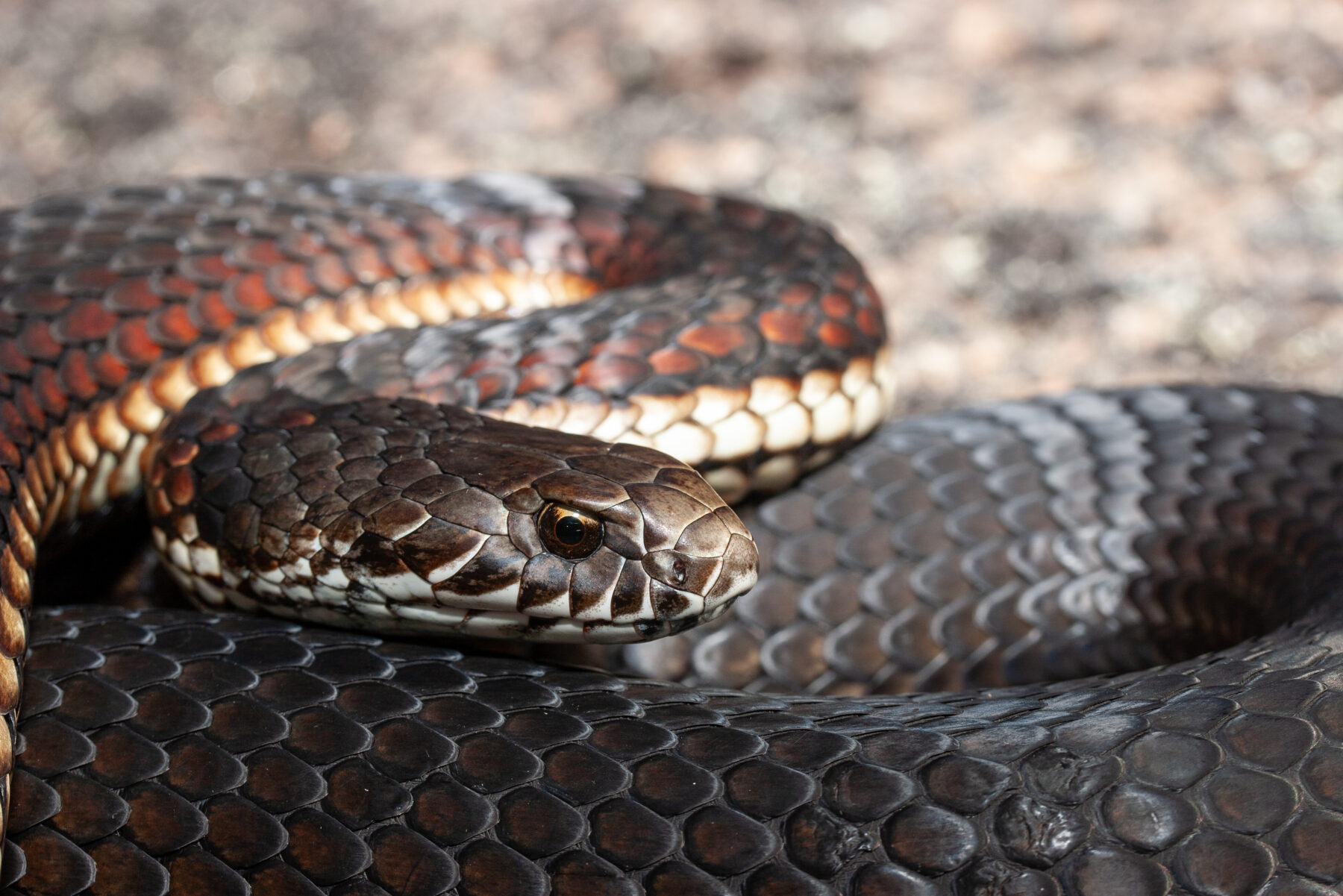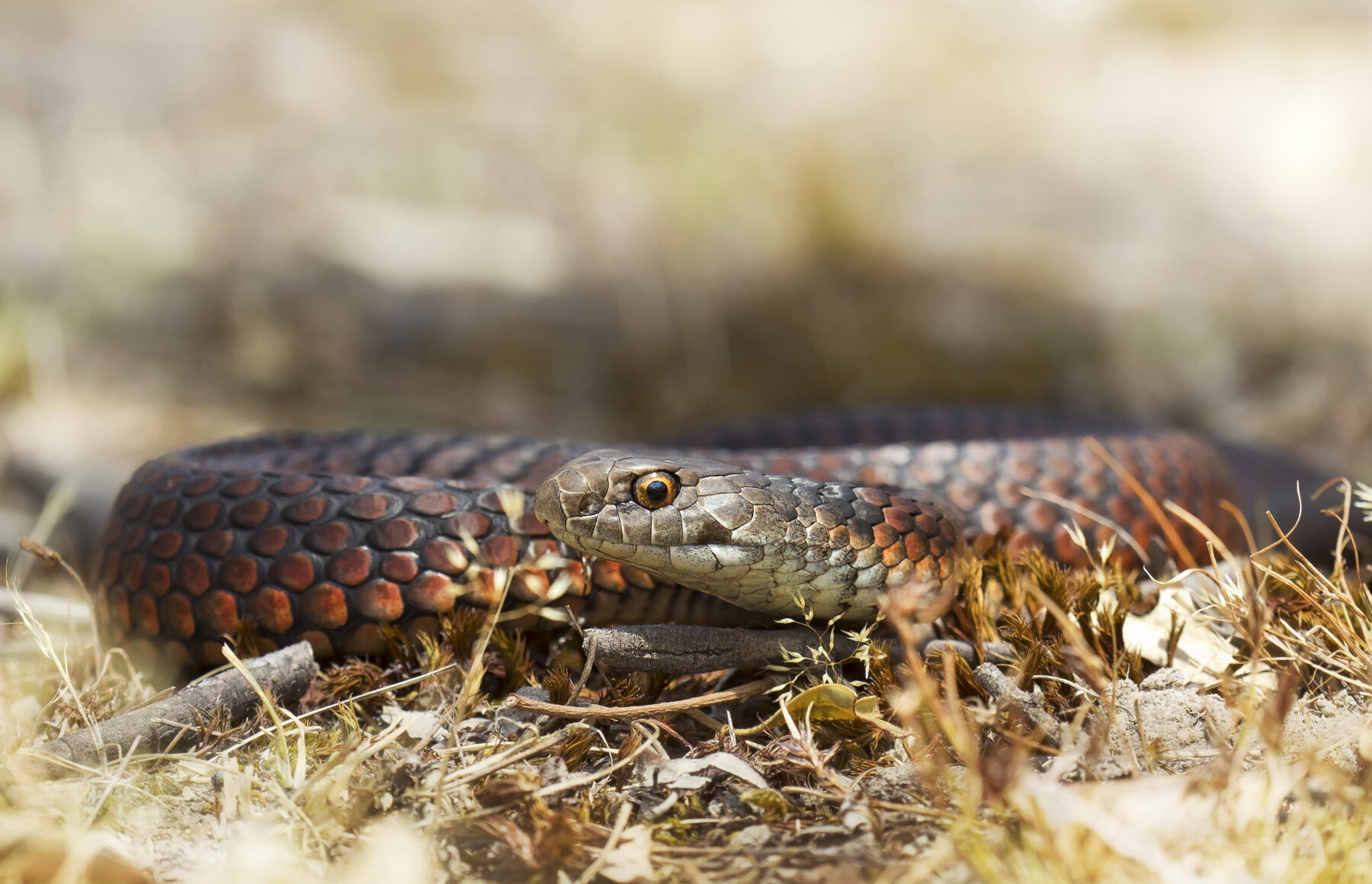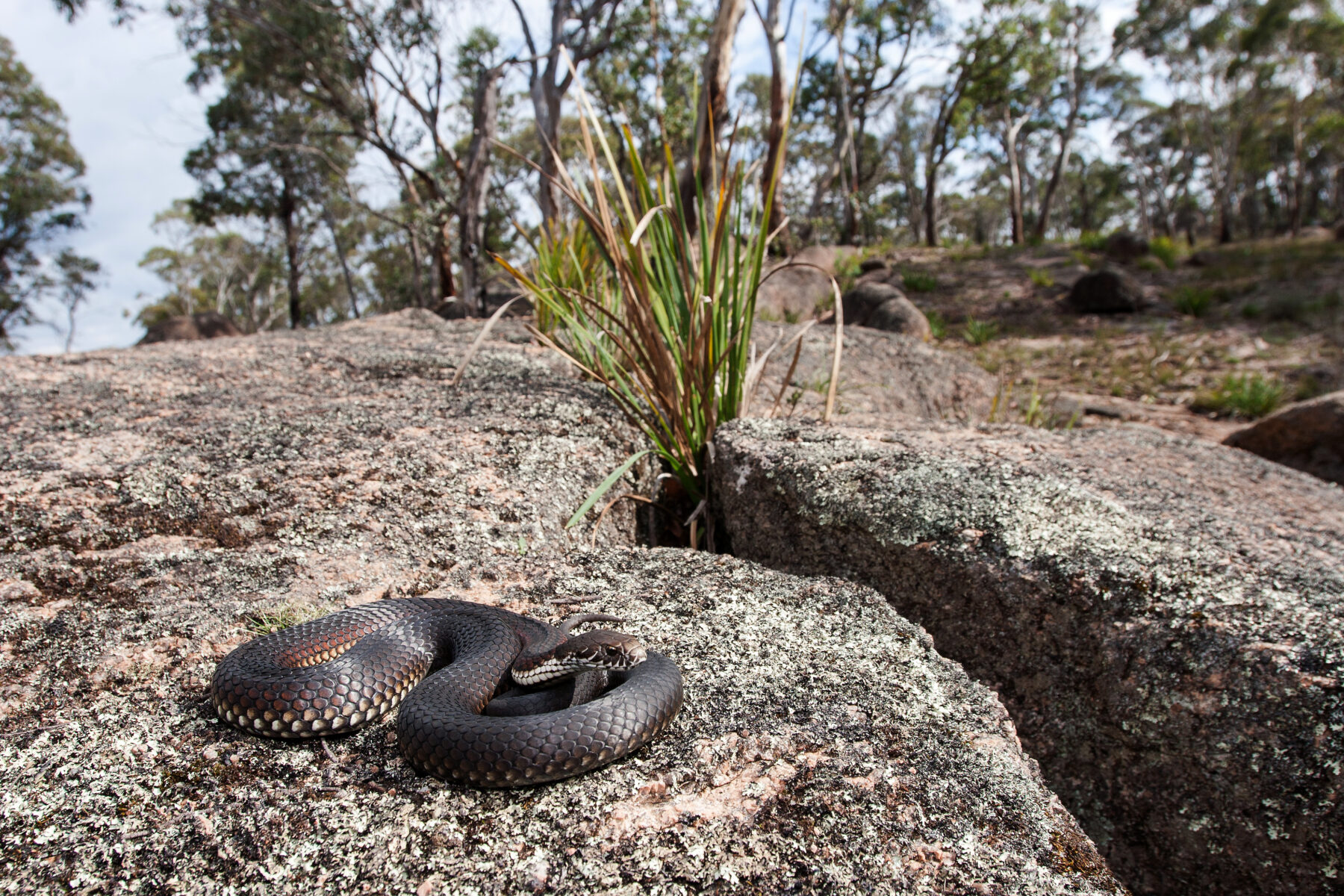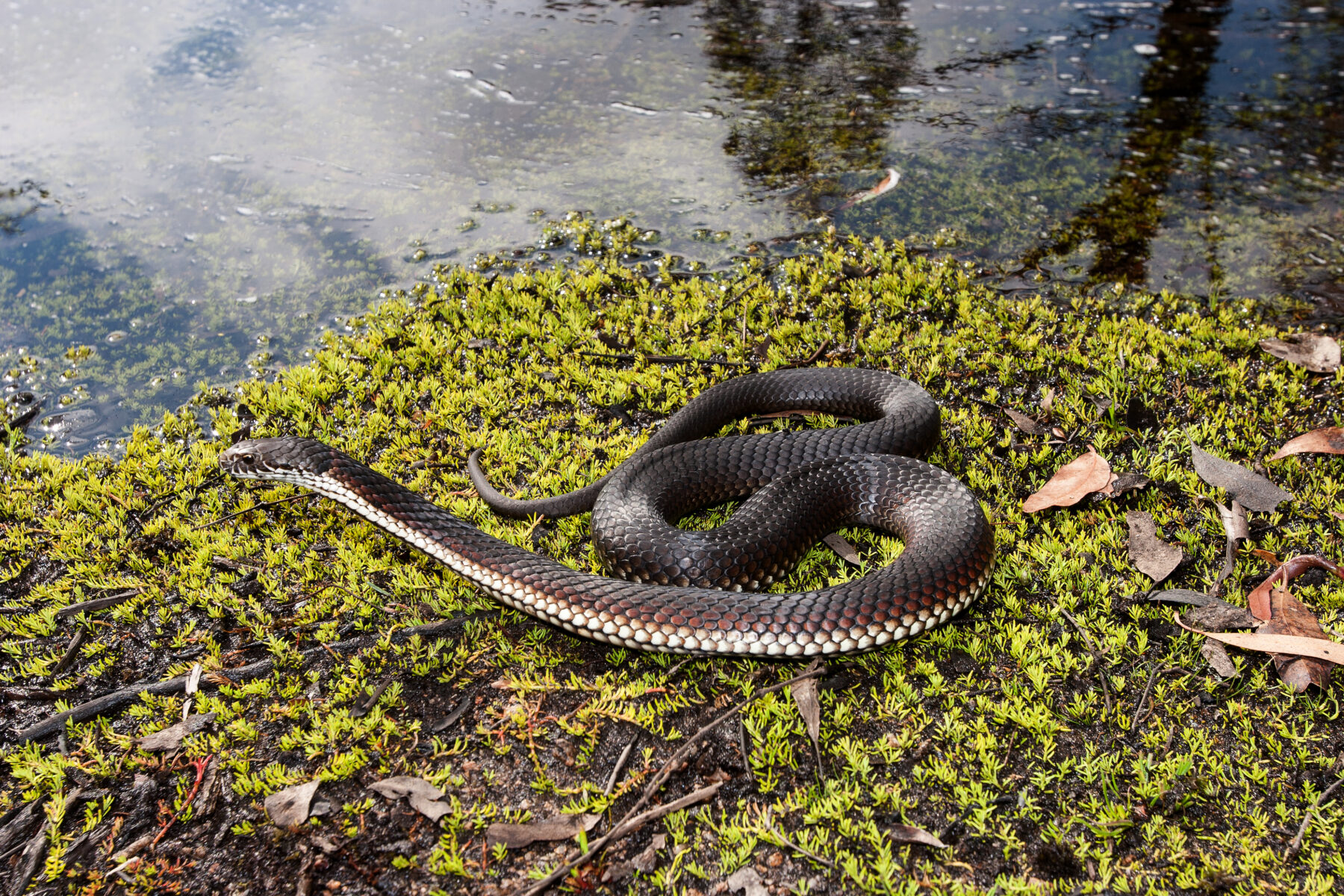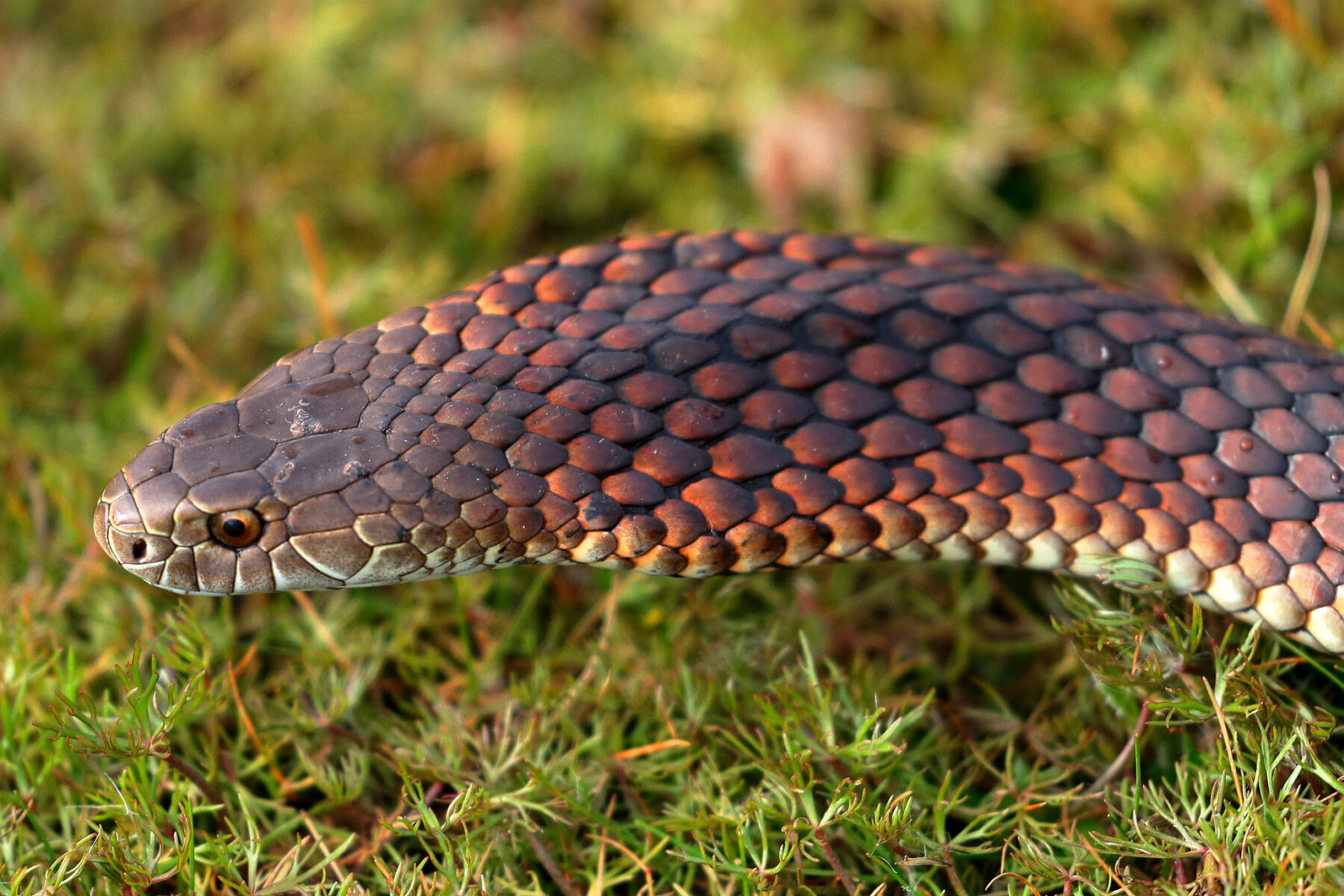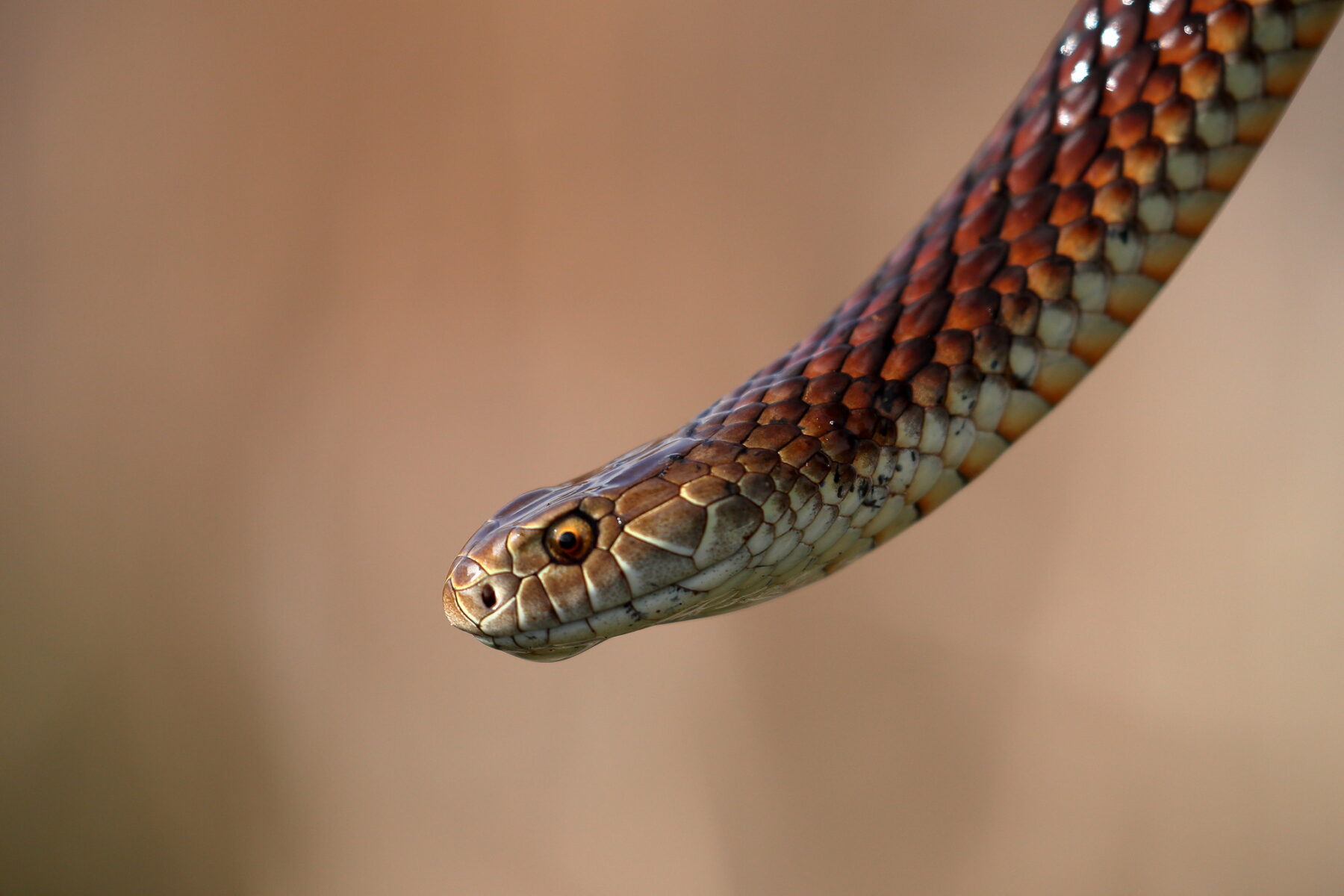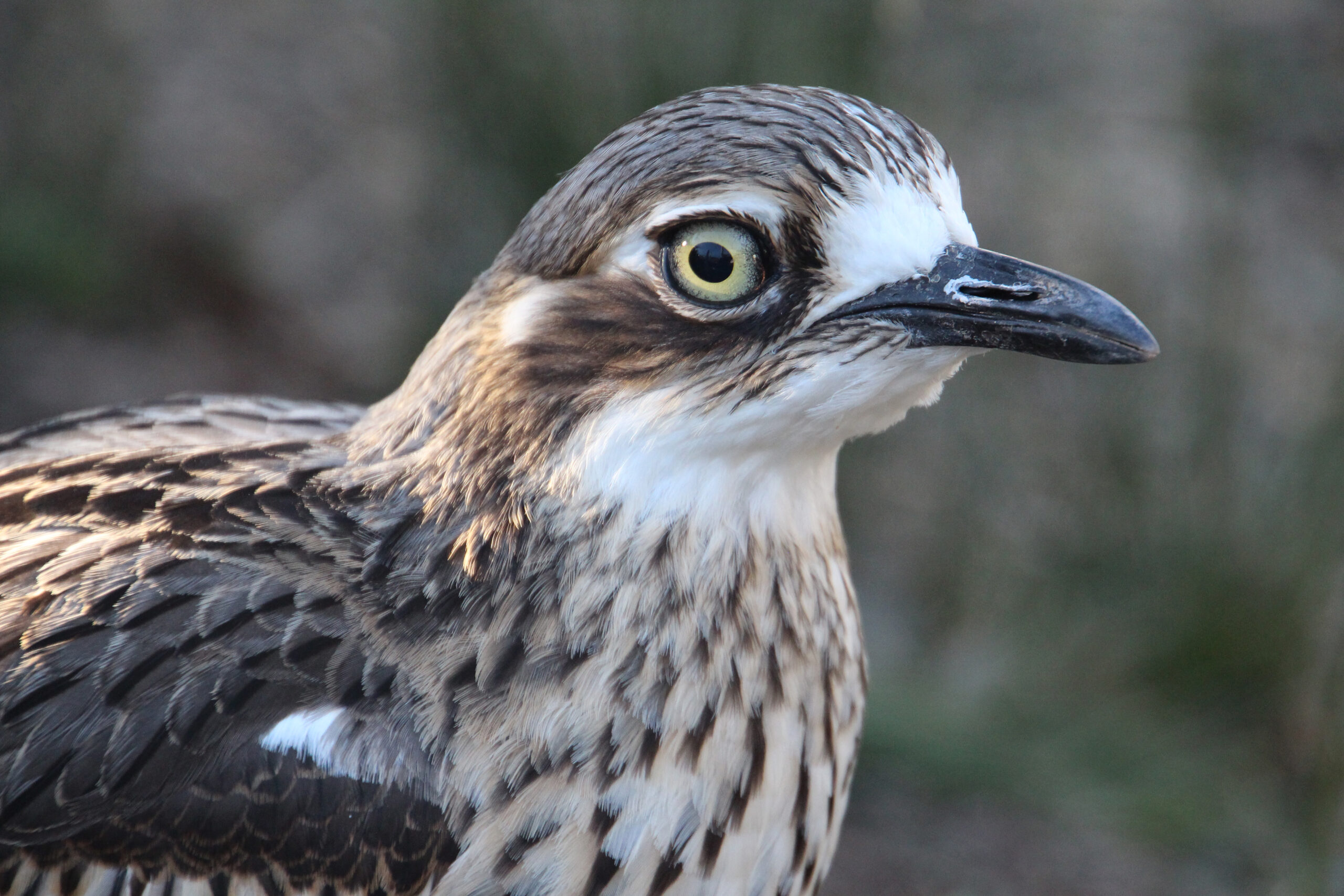| Common name | Copperhead snake |
| Scientific name | Austrelaps labialis, ramsayi, superbus |
| Type | Reptile |
| Diet | Carnivorous, eating insects, frogs, and lizards. |
| Average lifespan | Around 18 years in the wild |
| Size | Between 84 and 145cm in length |
These moisture-loving snakes can exist in some of the wettest and coldest parts of the country and although venomous, they are shy and rarely bite without being continuously provoked.
There are three copperhead snake species found within Australia: the pygmy (Austrelaps labialis), the highlands (Austrelaps ramsayi), and the lowlands (Austrelaps superbus) copperhead, all with varying coppery-brown colouration on their heads hence their name.
The three species are similar in form, with a muscley, strong body and they all share semi-gloss and uniform blackish to grey, brown scales on their back and upper sides of their bodies. Some lowlands and highlands copperheads display a brownish or orange hue.

Pygmy (Austrelaps labialis). 
Highland (Austrelaps ramsayi). 
Lowlands (Austrelaps superbus).
Found in cool and cold climates, the copperhead snake makes its home in south-eastern parts of Australia including Kangaroo Island, Bass Strait Islands and Tasmania.
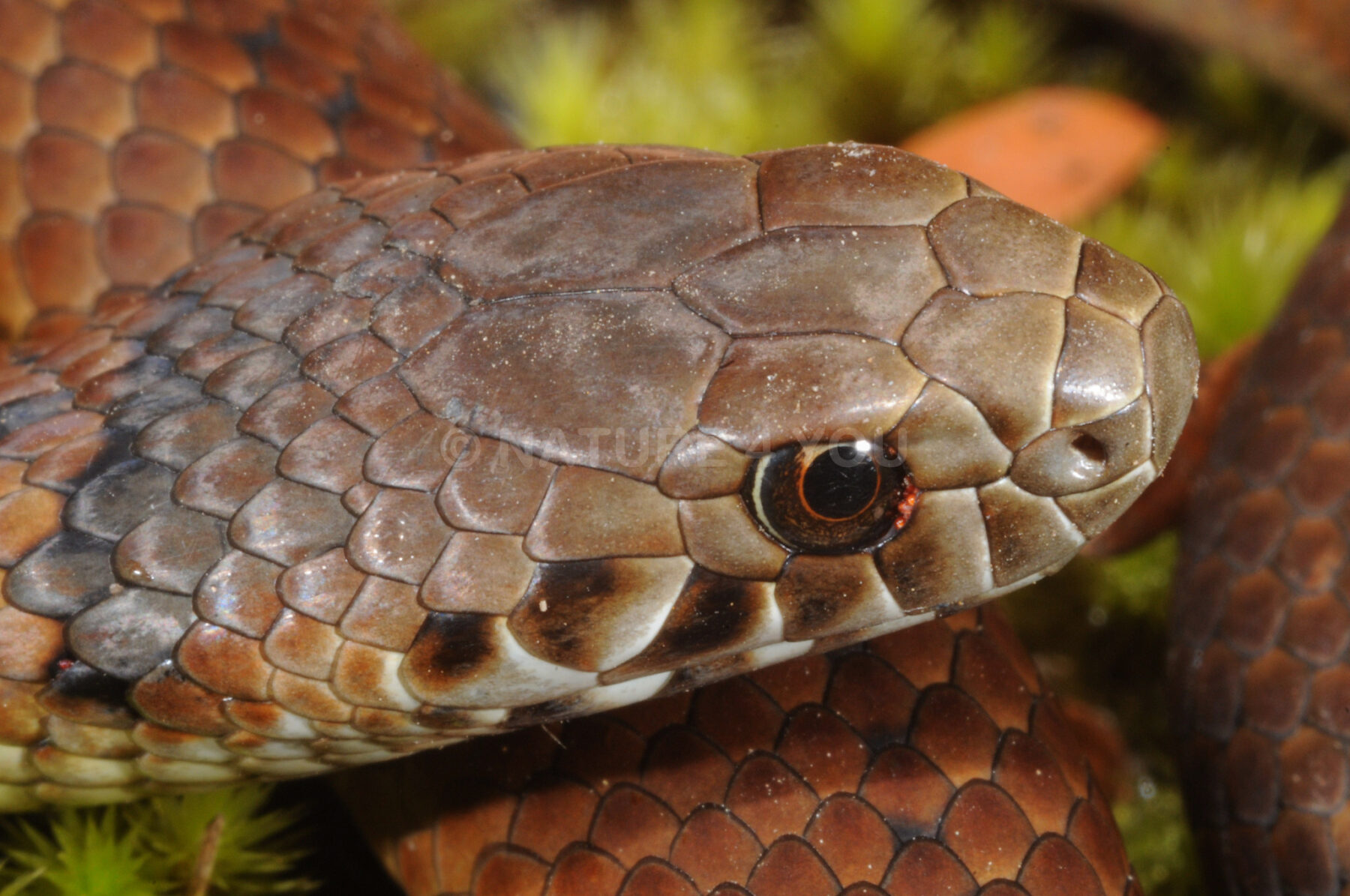
The pygmy is found only in the Lofty Ranges in South Australia within high altitude forests and on Kangaroo Island in coastal dunes, open grasslands, woodlands and in agricultural areas.
The highlands copperhead resides in the highlands of NSW and eastern Victoria, near water in woodlands and open forests.
And the lowlands copperhead lives in lowland areas of south-eastern South Australia, southern Victoria, Tasmania, and the islands of the Bass Strait, in grasslands, heathlands, woodlands and open scrub.
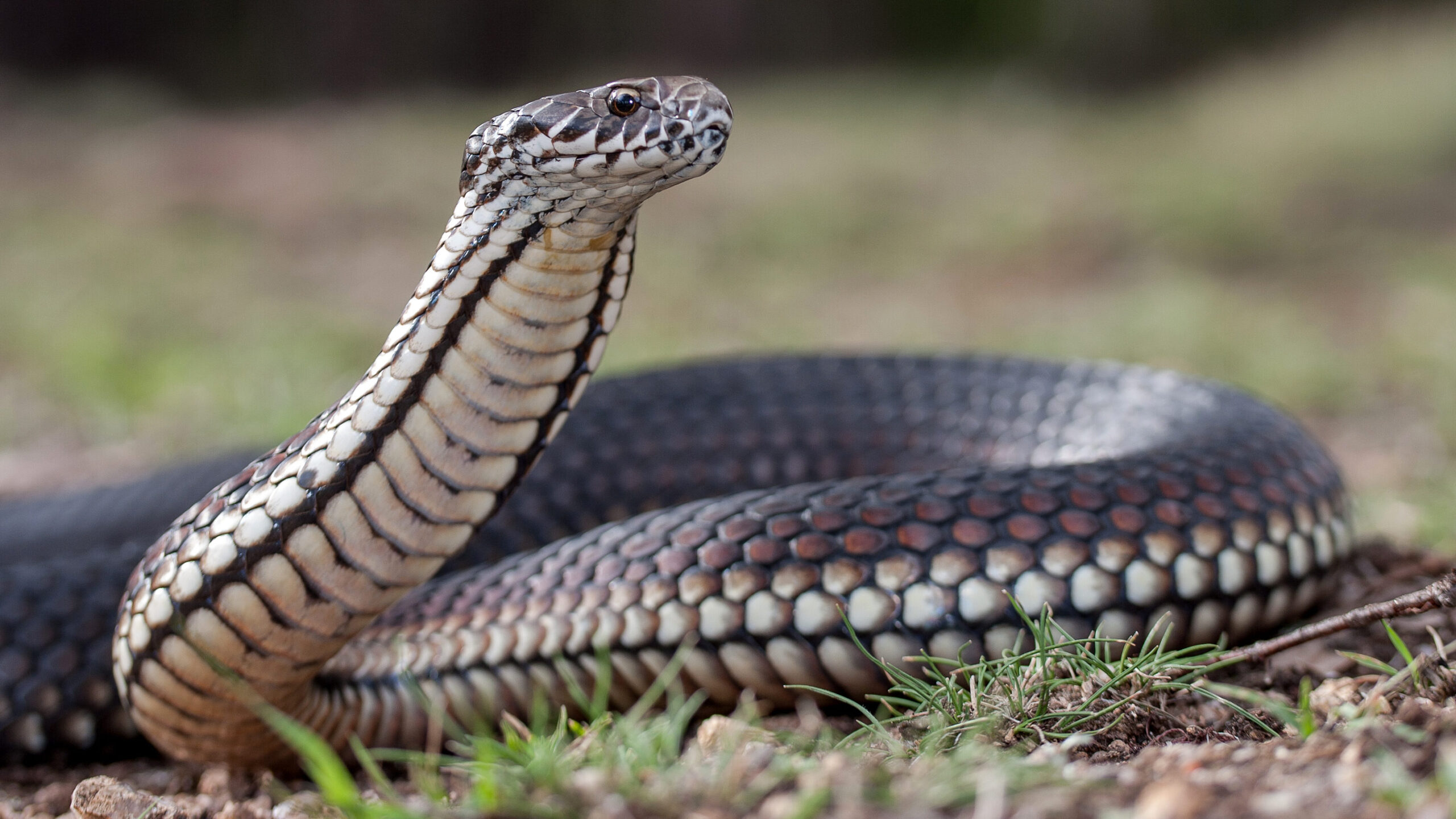
Active during the night or diurnal, copperhead snakes are often energetic in cool water and love to be close to swamps, marshes, lakes, creeks, streams, and rivers.
Although they are characterised as elapid, with short hollow fangs at the front of their upper jaw, copperhead snakes are largely inoffensive and feed almost exclusively on lizards and frogs, occasionally eating other small snakes or reptile eggs if the opportunity presents.
The skink is the top of the copperhead menu but like some other venomous species of snake, cannibalism has been known to take place within the species. Far from fussy, if hunger strikes and the occasion presents, copperheads have been known to eat other small snakes and even each other.
Moving mostly along the ground, copperhead snakes can climb if they need to. All three species produce an average of 15 live young (ovoviviparous) per litter, with male copperheads engaging in a type of combat at the start of the breeding season, keeping their heads apart but entwining their bodies. Newborn copperhead snakes have the same fully functional fangs as an adult and can inject venom that is just as toxic.
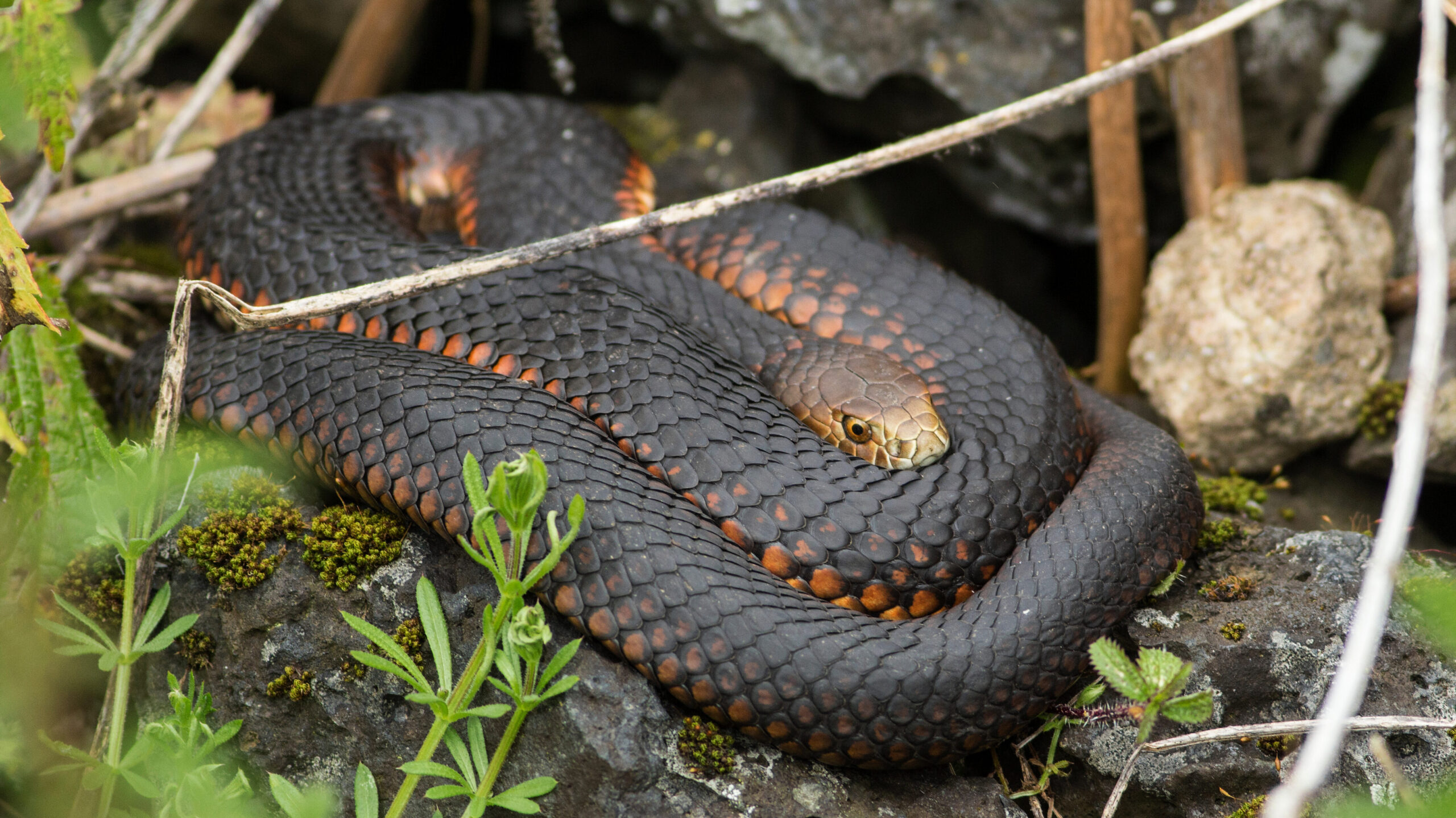
Although venomous, copperhead snakes are recorded as secretive, shy animals that prefer to avoid human encounters. With a venom that contains both post and pre-synaptic neurotoxins, and is also haemolytic and cytotoxic, these snakes won’t bite unless provoked, but an injury can cause death without medical intervention.

